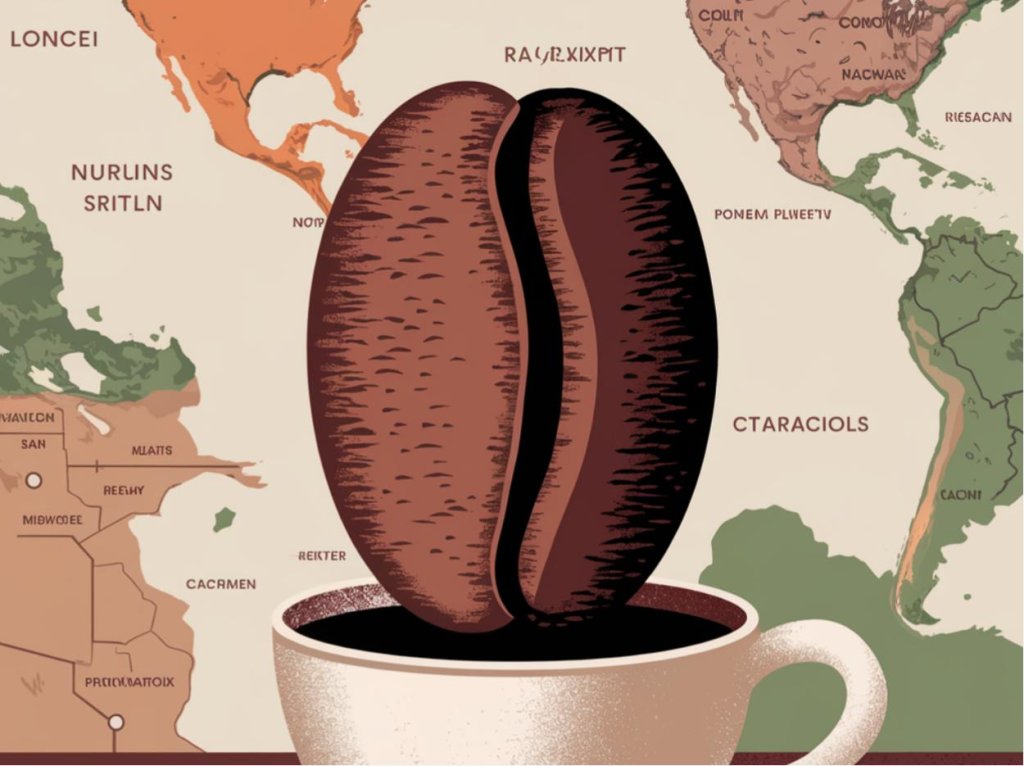Coffee Origin Flavors: How Different Coffee Regions Shape Taste
Introduction
The coffee origin flavors are shaped by a variety of factors, including altitude, climate, soil composition, and processing methods. From the high-altitude regions of Ethiopia to the volcanic soils of Central America, each coffee-producing country imparts unique characteristics to its beans. This article explores how coffee origin flavors influence taste and aroma, helping coffee enthusiasts make informed choices when selecting beans.
Understanding coffee origin flavors enhances the appreciation of different coffee varieties. Whether you prefer the floral notes of Ethiopian coffee or the chocolatey richness of Brazilian beans, learning about regional influences provides insight into the nuances of specialty coffee.
1. Key Factors Influencing Coffee Origin Flavors
Several factors contribute to the unique coffee origin flavors found in different regions:
- Altitude: Higher elevations produce more acidic and complex flavors due to slower bean maturation (National Coffee Association).
- Climate: Temperature, rainfall, and humidity impact sugar and acid content in coffee beans (Specialty Coffee Association).
- Soil Composition: Volcanic, loamy, and sandy soils affect mineral content, influencing coffee flavor (Perfect Daily Grind).
- Processing Methods: Washed, natural, and honey processing influence acidity, sweetness, and body (Coffee Chemistry).
- Variety & Cultivar: Different coffee species and hybrids contribute to distinct taste attributes.
2. African Coffee Origins: Bright and Fruity Profiles
Ethiopia
- Flavor Profile: Floral, fruity, and tea-like with bright acidity.
- Notable Regions: Yirgacheffe, Sidamo, Harrar.
- Processing: Mostly natural and washed.
- Unique Characteristics: Ethiopian coffees often feature jasmine, bergamot, and blueberry notes (ICO).
Kenya
- Flavor Profile: Bright acidity, wine-like fruitiness, and complex flavors.
- Notable Regions: Nyeri, Kirinyaga, Embu.
- Processing: Primarily washed.
- Unique Characteristics: Rich blackcurrant, citrus, and spice notes with crisp acidity (World Coffee Research).
Tanzania
- Flavor Profile: Bright acidity, berry and citrus notes.
- Notable Regions: Kilimanjaro, Mbeya.
- Processing: Mostly washed.
3. Latin American Coffee Origins: Balanced and Sweet Profiles
Colombia
- Flavor Profile: Balanced body, caramel sweetness, mild citrus acidity.
- Notable Regions: Huila, Nariño, Antioquia.
- Processing: Predominantly washed.
- Unique Characteristics: Smooth chocolate, nutty, and orange zest notes (Colombian Coffee Growers Federation).
Brazil
- Flavor Profile: Nutty, chocolatey, low acidity.
- Notable Regions: Minas Gerais, São Paulo.
- Processing: Predominantly natural and honey.
- Unique Characteristics: Creamy body, cocoa, peanut, and dried fruit undertones (Statista).
Costa Rica
- Flavor Profile: Bright acidity, fruit-forward, clean body.
- Notable Regions: Tarrazú, Central Valley.
- Processing: Mostly washed and honey.
- Unique Characteristics: Citrus, apricot, and honey sweetness (Costa Rican Coffee Institute).
4. Asian Coffee Origins: Earthy and Bold Profiles
Vietnam
- Flavor Profile: Bold, earthy, nutty, strong body.
- Notable Regions: Central Highlands.
- Processing: Primarily natural and washed.
- Unique Characteristics: Heavy body with deep chocolate, peanut, and tobacco-like flavors (Vietnam Coffee & Cocoa Association).
Indonesia (Sumatra, Java, Sulawesi)
- Flavor Profile: Full-bodied, spicy, herbal, low acidity.
- Processing: Wet-hulled (Giling Basah), giving it a distinct heavy body.
- Unique Characteristics: Earthy, spicy, and syrupy mouthfeel with notes of cedar, clove, and dark chocolate (Perfect Daily Grind).
India
- Flavor Profile: Spicy, low acidity, smooth body.
- Notable Regions: Karnataka, Tamil Nadu, Kerala.
- Processing: Washed and monsooned.
- Unique Characteristics: Pepper, cardamom, and clove-like flavors due to monsooning process (Coffee Board of India).
5. Chinese Coffee Origins: Emerging Specialty Coffee
Yunnan, China
- Flavor Profile: Floral, tea-like, medium acidity, and a balanced body.
- Notable Regions: Pu’er, Baoshan, Menglian, Lincang.
- Processing: Mostly washed, some natural processing.
- Unique Characteristics: Yunnan coffee features delicate sweetness, jasmine and stone fruit notes, and a smooth finish. It has been gaining recognition in specialty coffee markets globally due to its unique terroir and improved processing techniques (Yunnan Coffee Exchange).
6. Middle Eastern and Unique Coffee Origins
Yemen
- Flavor Profile: Spicy, wine-like, complex.
- Processing: Traditional natural processing.
- Unique Characteristics: Intense dried fruit, cardamom, and cocoa notes with syrupy body (Qima Coffee).
Hawaii (Kona)
- Flavor Profile: Smooth, nutty, rich body.
- Processing: Mostly washed.
- Unique Characteristics: Buttery mouthfeel with caramel and macadamia nut undertones (Hawaii Coffee Association).
Conclusion
The coffee origin flavors vary significantly depending on terroir, processing, and cultivation methods. Understanding these differences helps coffee enthusiasts and professionals make informed choices when selecting beans. Whether you’re looking for the floral elegance of Ethiopian coffee, the chocolatey depth of Brazilian beans, or the spice-forward uniqueness of Indian coffee, appreciating coffee origin flavors enhances the overall coffee-drinking experience.

